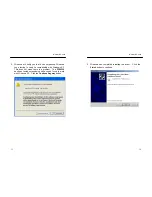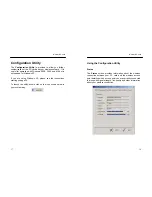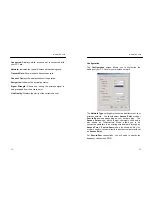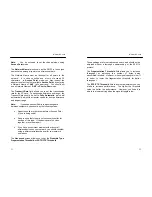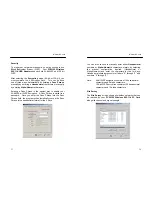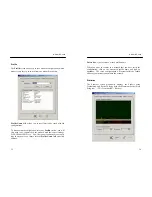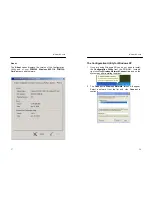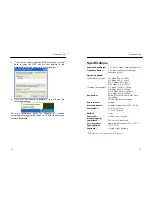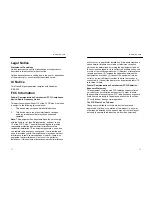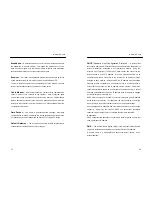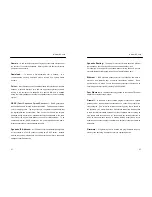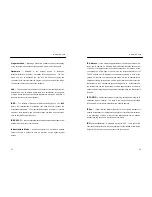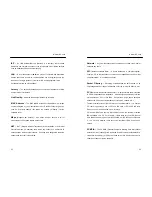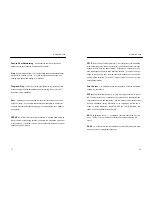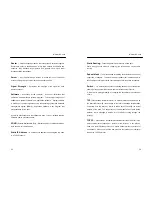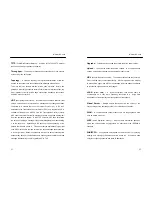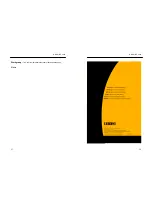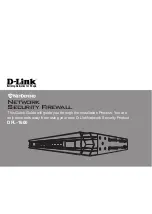
Wireless PC Card
43
Fragmentation
–
Breaking a packet into smaller units when transmitting
over a network medium that cannot support the
original size of the packet.
Hardware
–
Hardware is the physical aspect of computers,
telecommunications, and other information technology devices. The term
arose as a way to distinguish the “box” and the electronic circuitry and
components of a computer from the program you put in it to make it do things.
The program came to be known as the software.
Hub
–
The device that serves as the central location for attaching wires from
workstations. Can be passive, where there is no amplification of the signals;
or active, where the hubs are used like repeaters to provide an extension of
the cable that connects to a workstation.
IEEE
–
The Institute of Electrical and Electronics Engineers. The
IEEE
fosters the development of standards that often become national and
international standards. The organization publishes a number of journals,
has many local chapters, and has several large societies in special areas,
such as the IEEE Computer Society.
IEEE 802.11
–
Industry standard that enables wireless LAN hardware from
different manufacturers to communicate.
Infrastructure Mode
–
Allows all computers on a wired and wireless
network to share a peripheral, such as a printer or
high speed Internet
Access.
Wireless PC Card
44
IP Address
–
In the most widely installed level of the Internet Protocol (IP)
today, and IP address is a 32-binary digit number that identifies each sender
or receiver of information that is sent in packets across the Internet. When
you request an HTML page or send e-mail, the Internet Protocol part of
TCP/IP includes your IP address in the message (actually, in each of the
packets if more than one is required) and sends it to the IP address that is
obtained by looking up the domain name in the Uniform Resource Locator you
requested or in the e-mail address you’re sending a note to. At the other end,
the recipient can see the IP address of the Web page requestor or the e-mail
sender and can respond by sending another message using the IP address it
received.
IPCONFIG
–
A utility that provides for querying, defining and managing IP
addresses within a network. This utility is commonly used under Windows
NT and 2000, for configuring networks with a static IP address.
IPSec
–
IPSec (
I
nternet
P
rotocol
Sec
urity) is a developing standard for
security at the network or packet-processing layer of network communication.
A big advantage of IPSec is that security arrangements can be handled
without requiring changes to individual user computers.
IRQ
(
I
nterrupt
R
e
Q
uest) – A hardware interrupt on a PC. There are 16 IRQ
lines used to signal the CPU that a peripheral event has started or terminated.
Except for PCI devices, two devices cannot use the same line.
Summary of Contents for PCW300
Page 29: ...Wireless PC Card 55...

